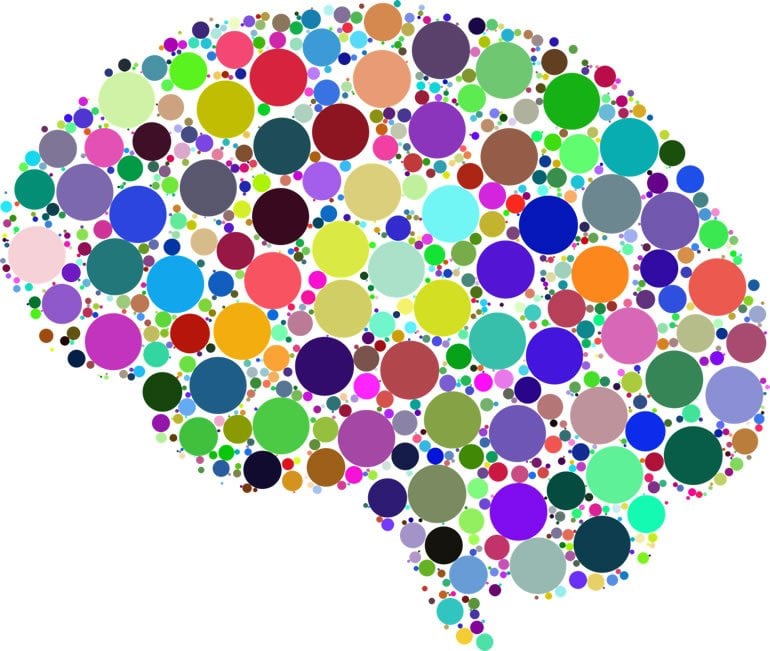Summary: Color emotion may be a universal phenomenon, a new study reveals. People from different parts of the world often associate the same color with the same emotions.
Source: Johannes Gutenberg Universitaet Mainz
People all over the world associate colors with emotions. In fact, people from different parts of the world often associate the same colors with the same emotions. This was the result of a detailed survey of 4,598 participants from 30 nations over six continents, carried out by an international research team. “No similar study of this scope has ever been carried out,” said Dr. Daniel Oberfeld-Twistel, member of the participating team at Johannes Gutenberg University Mainz (JGU). “It allowed us to obtain a comprehensive overview and establish that color-emotion associations are surprisingly similar around the world.”
In the current issue of Psychological Science, the scientists report that the participants were asked to fill out an online questionnaire, which involved assigning up to 20 emotions to twelve different color terms.
The participants were also asked to specify the intensity with which they associated the color term with the emotion. The researchers then calculated the national averages for the data and compared these with the worldwide average.
“This revealed a significant global consensus,” summarized Oberfeld-Twistel. “For example, throughout the world the color of red is the only color that is strongly associated with both a positive feeling — love — and a negative feeling — anger.”
Brown, on the other hand, triggers the fewest emotions globally.
However, the scientists also noted some national peculiarities. For example, the color of white is much more closely associated with sadness in China than it is in other countries, and the same applies to purple in Greece.
“This may be because in China white clothing is worn at funerals and the color dark purple is used in the Greek Orthodox Church during periods of mourning,” explained Oberfeld-Twistel. In addition to such cultural peculiarities, the climate may also play a role.
According to the findings from another of the team’s studies, yellow tends to be more closely associated with the emotion of joy in countries that see less sunshine, while the association is weaker in areas that have greater exposure to it.

According to Dr. Daniel Oberfeld-Twistel, it is currently difficult to say exactly what the causes for global similarities and differences are. “There is a range of possible influencing factors: language, culture, religion, climate, the history of human development, the human perceptual system.” Many fundamental questions about the mechanisms of color-emotion associations have yet to be clarified, he continued.
However, by using an in-depth analysis that included the use of a machine learning approach developed by Oberfeld-Twistel, a computer program that improves itself as the database grows, the scientists have already discovered that the differences between individual nations are greater the more they are geographically separated and/or the greater the differences between the languages spoken in them.
About this psychology research article
Source:
Johannes Gutenberg Universitaet Mainz
Contacts:
Daniel Oberfeld-Twistel – Johannes Gutenberg Universitaet Mainz
Image Source:
The image is in the public domain.
Original Research: Closed access
“Universal patterns in color-emotion associations are further shaped by linguistic and geographic proximit” by Daniel Oberfeld-Twistel et al. Psychological Science.
Abstract
Universal patterns in color-emotion associations are further shaped by linguistic and geographic proximit
Many of us “see red,” “feel blue,” or “turn green with envy.” Are such color-emotion associations fundamental to our shared cognitive architecture, or are they cultural creations learned through our languages and traditions? To answer these questions, we tested emotional associations of colors in 4,598 participants from 30 nations speaking 22 native languages. Participants associated 20 emotion concepts with 12 color terms. Pattern-similarity analyses revealed universal color-emotion associations (average similarity coefficient r = .88). However, local differences were also apparent. A machine-learning algorithm revealed that nation predicted color-emotion associations above and beyond those observed universally. Similarity was greater when nations were linguistically or geographically close. This study highlights robust universal color-emotion associations, further modulated by linguistic and geographic factors. These results pose further theoretical and empirical questions about the affective properties of color and may inform practice in applied domains, such as well-being and design.







